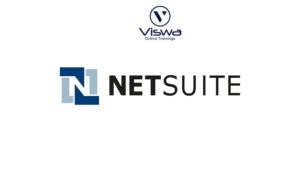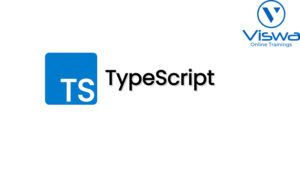Oracle SQL Certification Training
One of the top providers of online IT training worldwide is VISWA Online Trainings. To assist beginners and working professionals in achieving their career objectives and taking advantage of our best services, We provide a wide range of courses and online training.
Learners : 1080
Duration : 20 Days
About Course
The most popular language for interacting with databases and extracting data for use in application development, reporting, and analytics is taught in our SQL (Structured Query Language) course. It is commonplace in many sectors of society and is essential for aspirant data professionals to possess. The skills you need to query and analyse data from sophisticated relational databases will be provided to you through this course, along with an introduction to the SQL language. Join this course if you want to develop your data abilities so you can go up in your industry or change careers to one where you will work with data. Enrol today to earn your certification.
SQL Training Course Syllabus
✔ Basic Concepts
✔ Database Models
✔ First Normal Form
✔ Second Normal Form
✔ Third Normal Form
✔ Basics of S-Q-L
✔ Data types, expressions, operators
✔ Working with queries & Clauses
✔ Creating databases,
✔ Creating tables
✔ Types of constraints
✔ Nested subqueries
✔ Correlated subqueries
✔ Derived tables
✔ Creation of table
✔ Modifying the structure of a table
✔ Dropping a table
✔ Inserting, updating & deleting operations
✔ Operators, Built-in functions, Grouping
✔ Working with multiple tables
✔ Commit
✔ Rollback
✔ Save point
✔ Grant
✔ Revoke
✔ Introduction to Joins
✔ Inner join
✔ Outer join
✔ Cross joins
✔ Unions
✔ Introduction to indexes
✔ Creating, dropping indexes
✔ Clustered & non clustered indexes
✔ Introduction & advantages of views
✔ creating views
✔ altering, dropping views
✔ Creating Cursors
✔ Cursors vs. Select
✔ Types of cursors
✔ Triggers
✔ Functions
✔ Procedure
✔ Backup & Recovery
| Live Instructor Based Training With Software |
| Lifetime access and 24×7 support |
| Certification Oriented content |
| Hands-On complete Real-time training |
| Get a certificate on course completion |
| Flexible Schedules |
| Live Recorded Videos Access |
| Study Material Provided |
SQL Training - Upcoming Batches
7th NOV 2022
8 AM IST
Coming Soon
AM IST
5th NOV 2022
8 AM IST
Coming Soon
AM IST
Don't find suitable time ?
CHOOSE YOUR OWN COMFORTABLE LEARNING EXPERIENCE
Live Virtual Training
-
Schedule your sessions at your comfortable timings.
-
Instructor-led training, Real-time projects
-
Certification Guidance.
Self-Paced Learning
-
Complete set of live-online training sessions recorded videos.
-
Learn technology at your own pace.
-
Get access for lifetime.
Corporate Training
-
Learn As A Full Day Schedule With Discussions, Exercises,
-
Practical Use Cases
-
Design Your Own Syllabus Based
SQL Training FAQ'S
SQL stands for Structured Query Language. It is the standard language used to maintain the relational database and perform many different data manipulation operations on the data. SQL was initially invented in 1970. It is a database language used for database creation, deletion, fetching, and modifying rows, etc. Sometimes, it is pronounced as ‘sequel.’ We can also use it to handle organized data comprised of entities (variables) and relations between different entities of the data.
Get ahead in your career by learning SQL through VISWA Online Trainings
In 1974, SQL first debuted. One of the most popular languages for relational database maintenance is this one. In 1986, the American National Standards Institute (ANSI) and the International Organisation for Standardisation (ISO) adopted SQL as their respective standards.
- The data structure that includes commands like CREATE, ALTER, DROP, etc. is defined by the data definition language (DDL).
- Data manipulation language (DML): It is used to alter the database’s already-existing data. This group of commands includes SELECT, UPDATE, INSERT, and others.
- Data control language (DCL): It regulates access to the information kept in databases. This category of commands includes the verbs GRANT and REVOKE.
- The database’s transaction actions are handled using the Transaction Control Language (TCL). This group of commands includes COMMIT, ROLLBACK, SET TRANSACTION, SAVEPOINT, and others.
A table is a collection of data that has been arranged into rows and columns. Users can store and display records in a structured style thanks to it. It resembles worksheets in a spreadsheet program. Here, columns are the attribute of the data items included in a given row, and rows are the tuples, which represent the simple data item. Rows are horizontal, whilst Columns might be classified as vertical.
Fields are the components to provide the structure for the table. It stores the same category of data in the same data type. A table contains a fixed number of columns but can have any number of rows known as the record. It is also called a column in the table of the database. It represents the attribute or characteristics of the entity in the record.
Example
Table: Student
Field: Stud_rollno, Stud_name, Date of Birth, Branch, etc.
An organized collection of data that is divided into tables, rows, columns, and indexes is known as a database. It assists the user in regularly finding pertinent information. Data access, data modification, data retrieval, data saving, and data management are all made incredibly simple by this electronic system. Due to its great operational ease and ease of use, almost every organization employs a database to store its data. The database gives us perfect access to the data and enables us to carry out necessary operations.
The following are the common features of a database:
- Manages large amounts of data
- Accurate
- Easy to update
- Security
- Data integrity
- Easy to research data
Reviews
 Lavanya Posina2024-09-30To get the SAP S4HANA MM training is really worth from VISWA Technologies. I would like to thank you for providing an excellent training.
Lavanya Posina2024-09-30To get the SAP S4HANA MM training is really worth from VISWA Technologies. I would like to thank you for providing an excellent training. Krishna Grandhi2024-09-19I attended PBCS course. Trainer has good knowledge and his explanation is easy to understand. The support team is also supportive during the training period. Overall experience is good.
Krishna Grandhi2024-09-19I attended PBCS course. Trainer has good knowledge and his explanation is easy to understand. The support team is also supportive during the training period. Overall experience is good. Siddhartha Mothukuri2024-09-10Learnt SAP EWM and it has been a really good experience with VISWA Online Trainings and trainer has been excellent in terms of his understanding in business as well as SAP. Thank you
Siddhartha Mothukuri2024-09-10Learnt SAP EWM and it has been a really good experience with VISWA Online Trainings and trainer has been excellent in terms of his understanding in business as well as SAP. Thank you Lakshmiprasanna Annem2024-08-01Thanks chaitanya arrange for sap bw on Hana job support. I will recommend definitely anyone.
Lakshmiprasanna Annem2024-08-01Thanks chaitanya arrange for sap bw on Hana job support. I will recommend definitely anyone. VINOD reddy2024-07-23Amazing Oracle Transportation Management (OTM) training! Definitely recommend.
VINOD reddy2024-07-23Amazing Oracle Transportation Management (OTM) training! Definitely recommend. Arvind P2024-06-28Good institute. Very responsible. As a trainer I got a good experience with them
Arvind P2024-06-28Good institute. Very responsible. As a trainer I got a good experience with them srinivasulu p2024-05-14I have recently enrolled azure cloud security training. There was lots of interaction sessions. It was best online learning platform.
srinivasulu p2024-05-14I have recently enrolled azure cloud security training. There was lots of interaction sessions. It was best online learning platform. Mahendra Reddy2024-05-14I would definitely recommend it anyone looking for generative AI course. This is friendly course thanks phani kumar
Mahendra Reddy2024-05-14I would definitely recommend it anyone looking for generative AI course. This is friendly course thanks phani kumar




